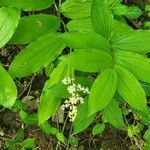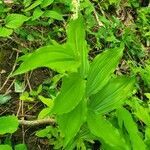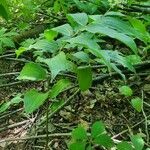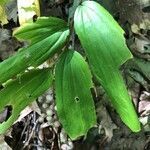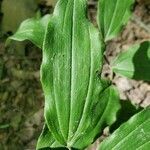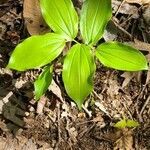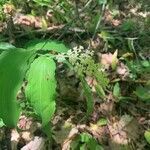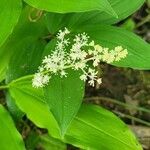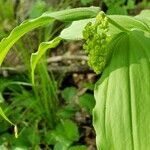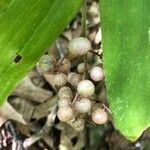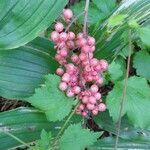A perennial plant. It grows 75-90 cm high and spreads 45-60 cm wide. The leaves have distinct veins. The leaves are alternate but closely arranged. The stems are arching and have flower heads at the tip. These are fluffy and tapering. They are creamy and have a scent. The fruit are pale red berries speckled with purple.
